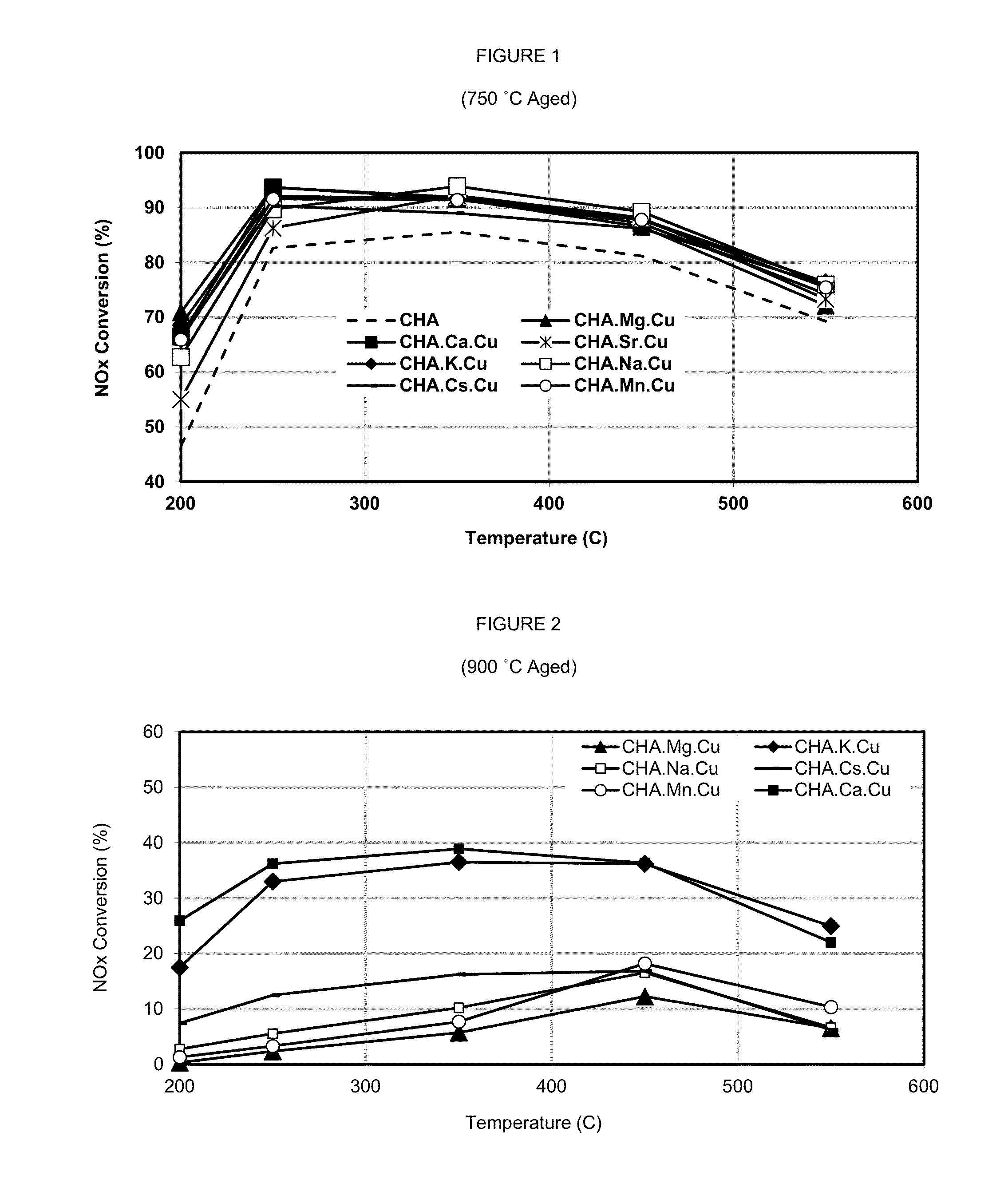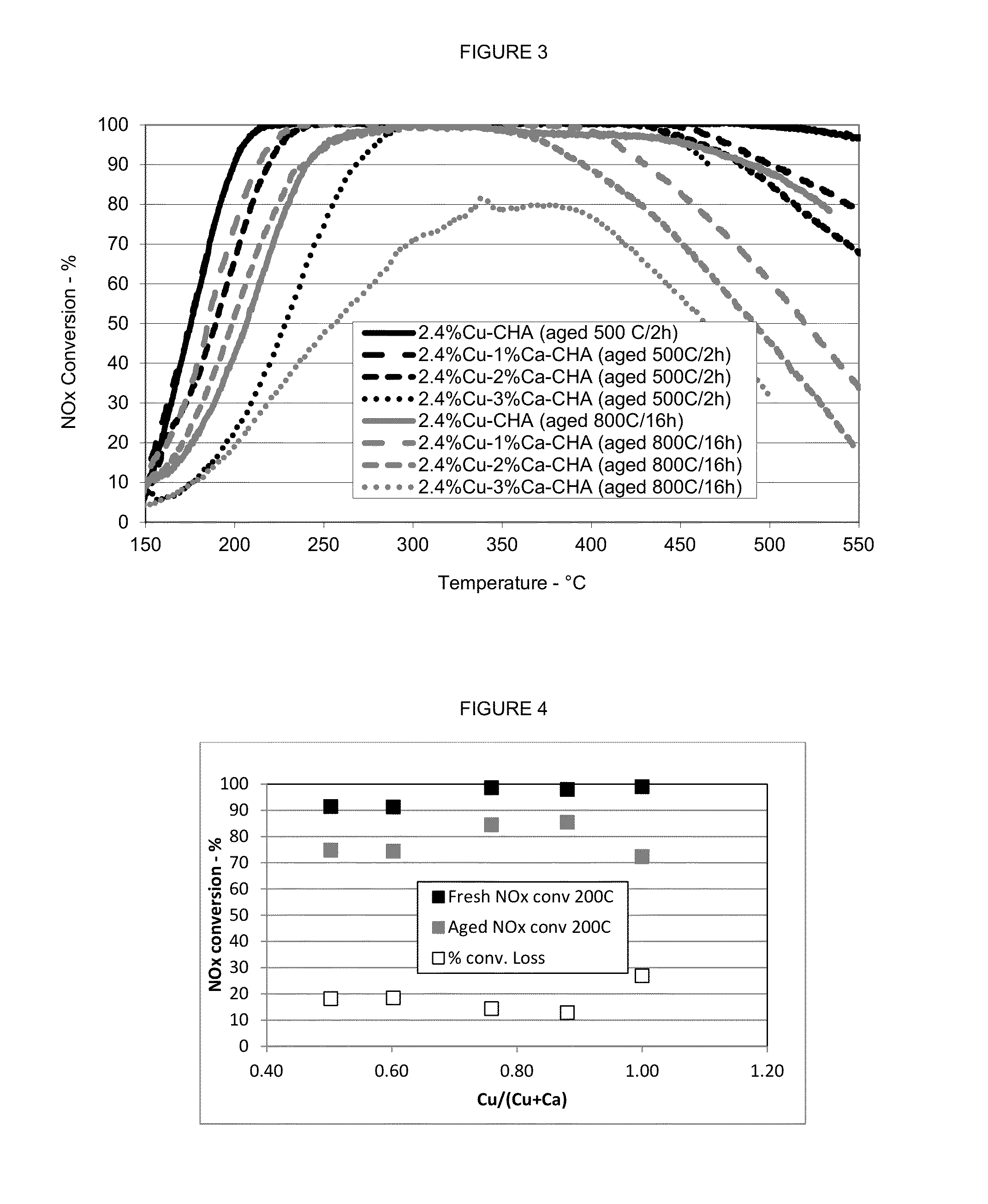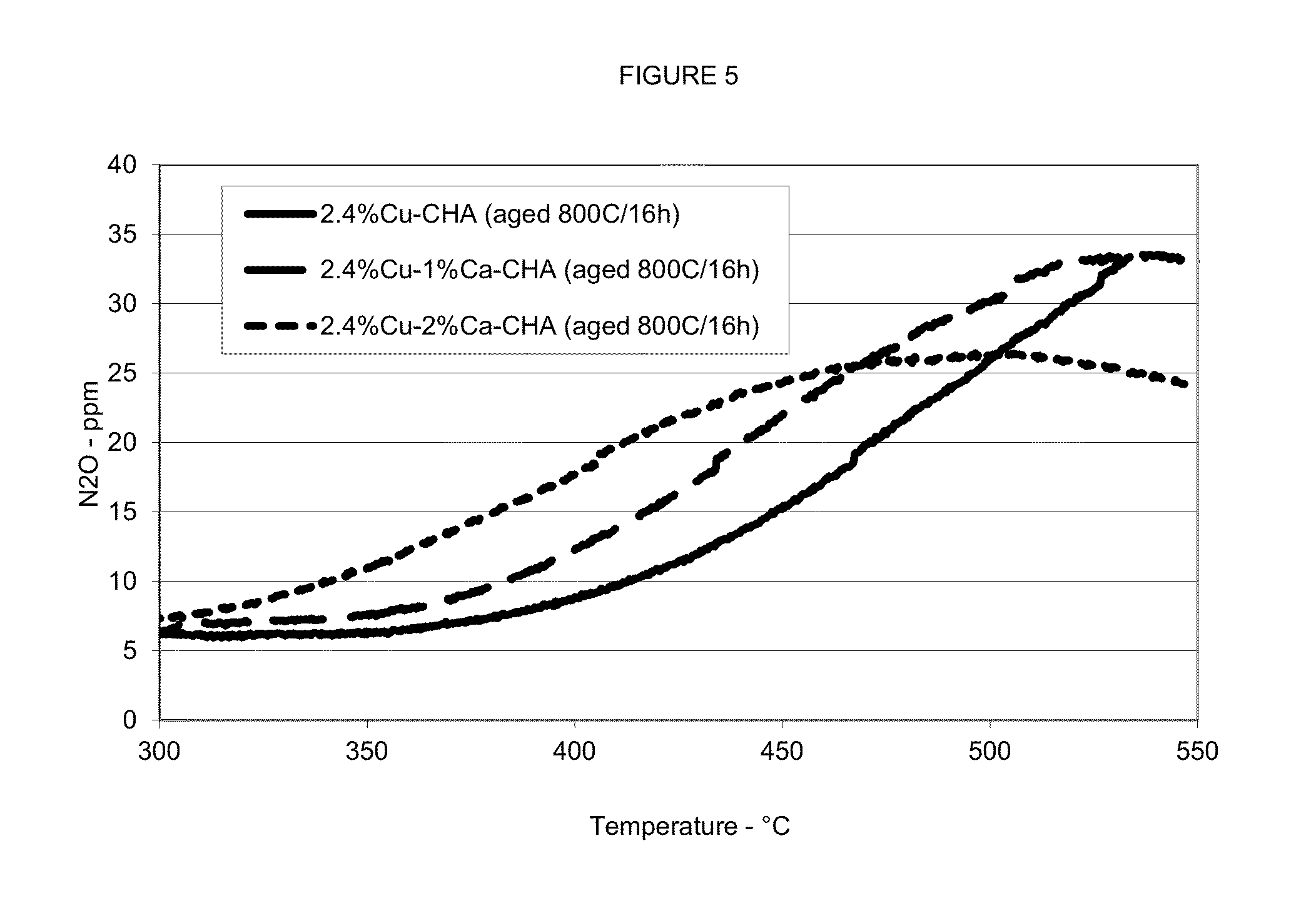Zeolite catalyst containing metals
a technology of zeolite catalyst and metal, which is applied in the field of catalysts and systems, can solve the problems that the catalyst components will likely be subject to atypical events, and achieve the effects of improving the hydrothermal stability of the material, and low silica-to-alumina ratio
- Summary
- Abstract
- Description
- Claims
- Application Information
AI Technical Summary
Benefits of technology
Problems solved by technology
Method used
Image
Examples
example 1 (
a-g)
Preparation and NOx Performance of Alkali and Alkaline Metal Catalyst
[0065](a) Approximately 600 g of synthetic, dehydrated H-chabazite (isotype SSZ-13) powder, having an SAR of about 17 and an alkali metal concentration of less than about 0.1 weight percent, was immersed in a solution containing 0.129 M copper acetate and 0.212 M calcium acetate for about 4 hours at a temperature of about 25° C. to allow incorporation of the catalytically active copper and calcium cations into the molecular sieve structure of the chabazite by ion exchange. The unexchanged ions were allowed to precipitate out and the remaining calcium / copper exchanged chabazite was washed and dried for about 8 hours at 80° C. The resulting product was a zeolite powder having about 2.4 weight percent exchanged copper and about 0.3 weight percent exchanged calcium.[0066](b) The general procedure in Example (1)(a) was repeated except that the solution into which the chabazite was immersed contained 0.218 M potassiu...
example 2 (
a-b) h
Effect of Order of Metal Addition on NOx Performance
[0075](a) The procedure in Example (1)(a) was repeated except that the chabazite powder was first exchanged with copper and subsequently with calcium to produce a zeolite powder having about 2.4 weight percent exchanged copper and about 1 weight percent exchanged calcium. A portion of the powder sample was hydrothermally aged at 500° C. for 2 hours and another portion of the powder sample was hydrothermally aged at 800° C. for 16 hours.[0076](b) The procedure in Example (1)(a) was repeated except that the chabazite powder was first exchanged with calcium and subsequently with copper to produce a zeolite powder having about 2.4 weight percent exchanged copper and about 1 weight percent exchanged calcium. A portion of the powder sample was hydrothermally aged at 500° C. for 2 hours and another portion of the powder sample was hydrothermally aged at 800° C. for 16 hours.
[0077]The samples described in Examples (2)(a) and (b) were...
example 3 (
a-c)
NOx Performance as a Function of Calcium Loading
[0078](a) The procedure in Example (2)(b) was repeated to produce an aluminosilicate zeolite powder having about 2.4 weight percent exchanged copper and about 1 weight percent exchanged calcium. A portion of the powder sample was hydrothermally aged at 500° C. for 2 hours and another portion of the powder sample was hydrothermally aged at 800° C. for 16 hours.[0079](b) The procedure in Example (2)(b) was repeated except that the resulting product was an aluminosilicate zeolite powder having about 2.4 weight percent exchanged copper and about 2 weight percent exchanged calcium. A portion of the powder sample was hydrothermally aged at 500° C. for 2 hours and another portion of the powder sample was hydrothermally aged at 800° C. for 16 hours.[0080](c) The procedure in Example (2)(b) was repeated except that the resulting product was an aluminosilicate zeolite powder having about 2.4 weight percent exchanged copper and about 3 weight...
PUM
| Property | Measurement | Unit |
|---|---|---|
| mole ratio | aaaaa | aaaaa |
| mole ratio | aaaaa | aaaaa |
| mole ratio | aaaaa | aaaaa |
Abstract
Description
Claims
Application Information
 Login to View More
Login to View More - R&D Engineer
- R&D Manager
- IP Professional
- Industry Leading Data Capabilities
- Powerful AI technology
- Patent DNA Extraction
Browse by: Latest US Patents, China's latest patents, Technical Efficacy Thesaurus, Application Domain, Technology Topic, Popular Technical Reports.
© 2024 PatSnap. All rights reserved.Legal|Privacy policy|Modern Slavery Act Transparency Statement|Sitemap|About US| Contact US: help@patsnap.com










